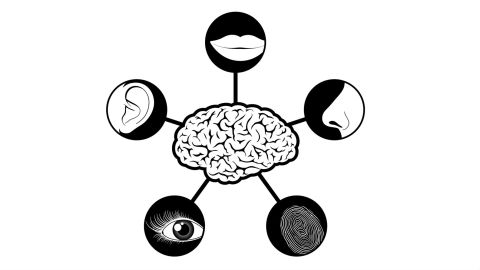Hearing Through Your Skin, and Other Adventures in Sensory Substitution

We’re entering a very interesting stage of human history right now where we can start importing technology to enhance our natural senses or perception of the world. So as it stands now, as biological creatures, we only see a very small strip of what’s going on. Obviously, the infinitely large and the infinitely small – our brains aren’t even wired to be able to understand that.
But even on the space scales that we live at, we don’t see most of what’s going on. So, for example, take electromagnetic radiation, there’s a little strip of that that we can see and we call it visible light. But the whole rest of that spectrum – radio waves, television, cell phone, gamma rays, x-rays, it’s invisible to us because we don’t have biological receptors for it. So CNN is passing through your body right now and you don’t know it because you don’t have the right receptors for it. Well, it turns out that the part that we see of the spectrum is one ten trillionth of it, so we’re not seeing most of what’s going on.
What’s very interesting, I think, as we keep pushing forward with technology, is we’ll be able to take more and more data from those invisible parts of the world and start feeding them into our brain. So, for instance, snakes see in the infrared range and honey bees see in the ultraviolet range. Well, there’s no reason why we can’t start building devices to see that and feed it directly into our brains. And this is one of the things that my laboratory is working on right now, sensory enhancement and also sensory substitution, so let me explain what those are.
Actually, I’ll start with sensory substitution. What we’re doing right now is we’re building a vest for people who are deaf and there’s a microphone on the vest and it picks up sounds and it turns it into vibrations on the body. So it’s little vibratory motors like you find in your cell phone and what’s happening is we’re doing digital signal processing on the auditory stream and we’re feeding this into somebody’s body and they will come to be able to hear through their skin.
Now, this sounds crazy, but remember that hearing anyway is just air compression waves getting turned into electrical signals that go into the brain. So what we’re doing is we’re just feeding that through an atypical sensory channel, it gets turned into electrical signals in the brain.
In Their Own Words is recorded in Big Think’s studio.
Image courtesy of Shutterstock





